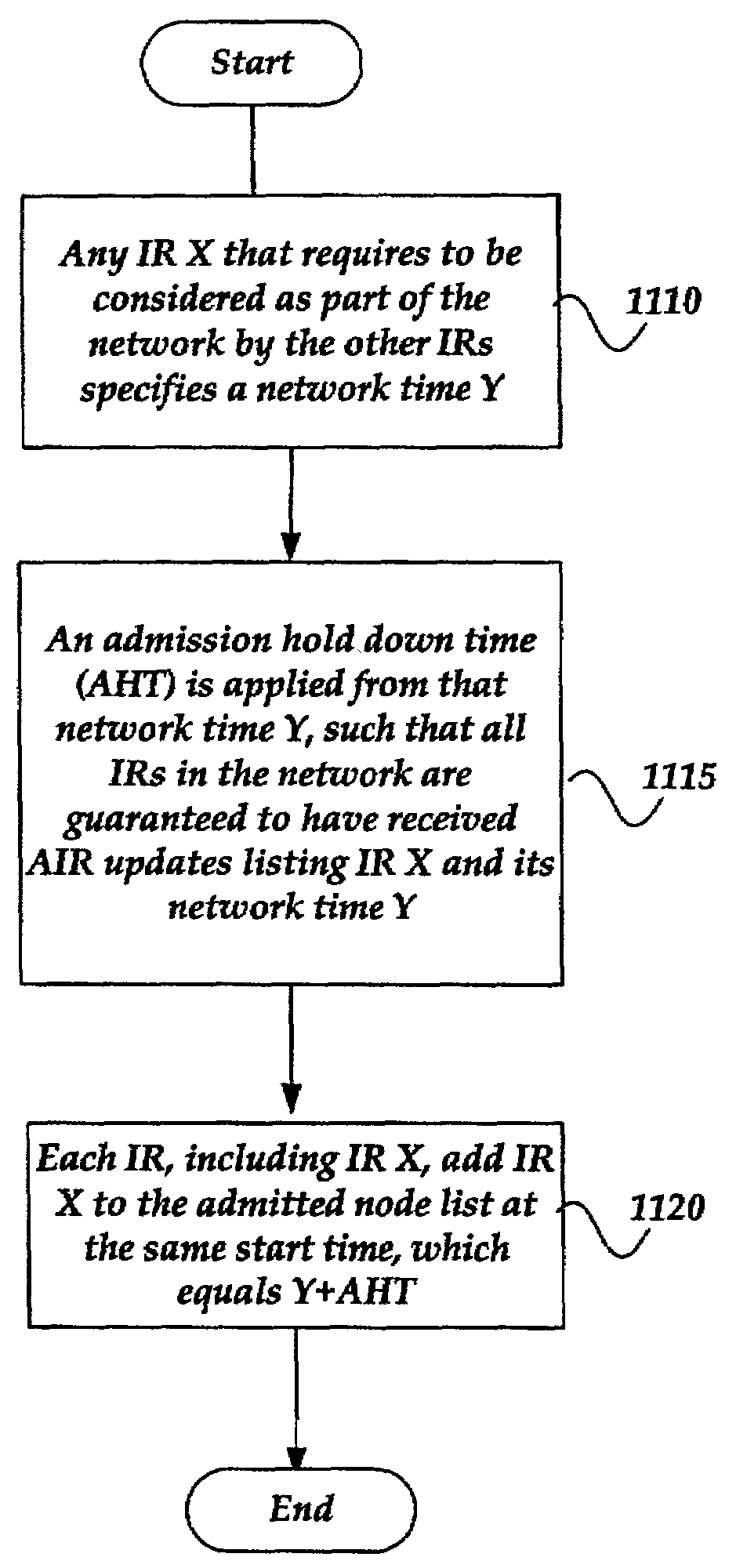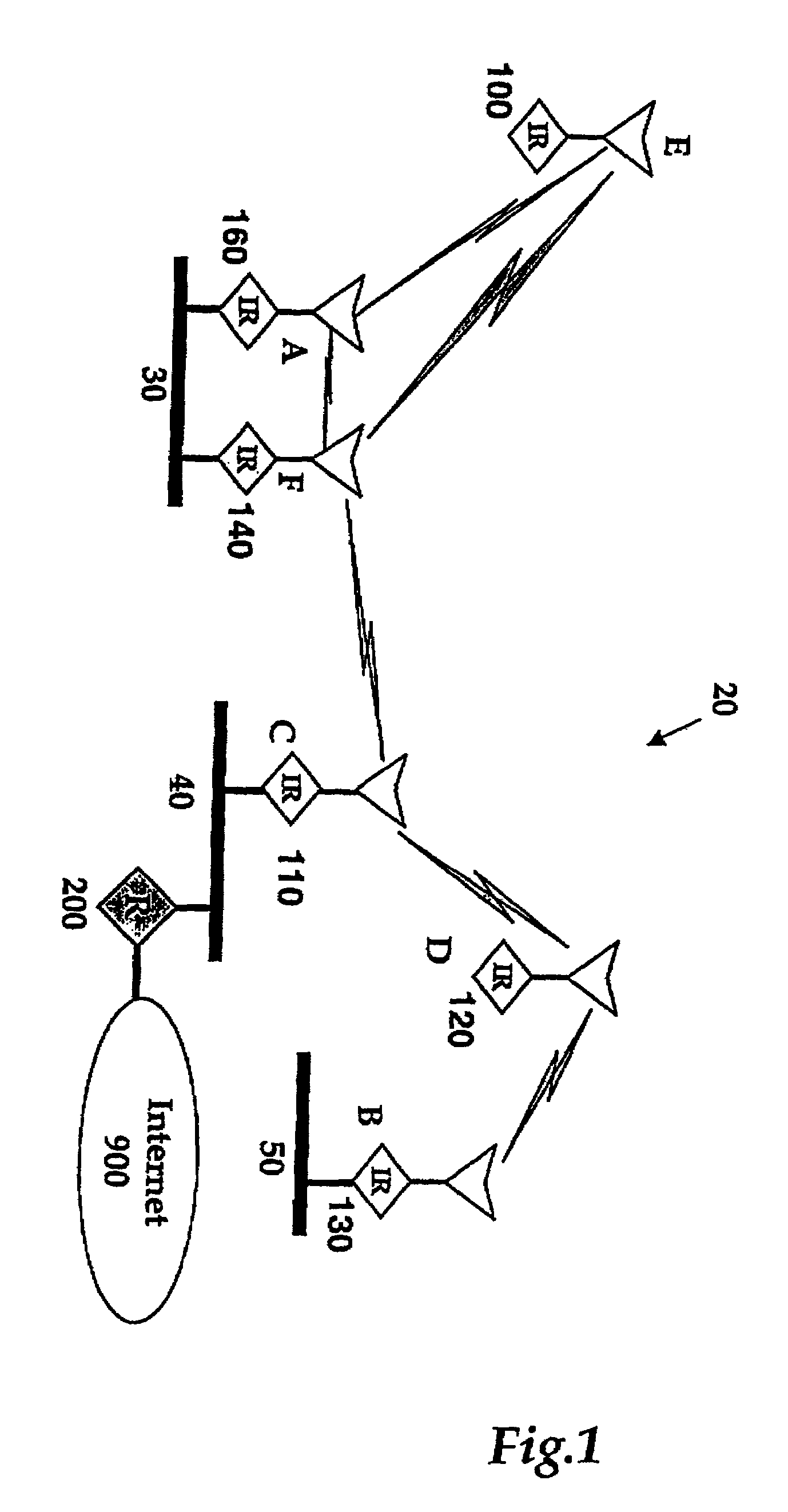System and method for transmission scheduling using network membership information and neighborhood information
a transmission scheduling and network membership technology, applied in the field of transmission scheduling, can solve the problems of reducing the performance of csma to that of the pure aloha protocol, introducing difficult problems at the link and network layer, and reducing the performance of csma. , to achieve the effect of increasing channel utilization and efficient channel utilization
- Summary
- Abstract
- Description
- Claims
- Application Information
AI Technical Summary
Benefits of technology
Problems solved by technology
Method used
Image
Examples
Embodiment Construction
[0047]In the following detailed description of exemplary embodiments of the invention, reference is made to the accompanied drawings, which form a part hereof, and which is shown by way of illustration, specific exemplary embodiments of which the invention may be practiced. Referring to the drawings, like numbers indicate like parts throughout the views. Additionally, a reference to the singular includes a reference to the plural unless otherwise stated or is inconsistent with the disclosure herein.
[0048]A system and method for the scheduling of transmissions in ad hoc networks will now be described.
I. Basic Service and Assumptions
[0049]For purposes of this discussion, the radios used in the exemplary network are half-duplex and tune to only one channel at a time, although they can switch to any of the available channels. Like previous MAC protocols based on transmission scheduling, time is slotted and that slots are grouped into frames. Frames are further organized into epochs.
[005...
PUM
 Login to view more
Login to view more Abstract
Description
Claims
Application Information
 Login to view more
Login to view more - R&D Engineer
- R&D Manager
- IP Professional
- Industry Leading Data Capabilities
- Powerful AI technology
- Patent DNA Extraction
Browse by: Latest US Patents, China's latest patents, Technical Efficacy Thesaurus, Application Domain, Technology Topic.
© 2024 PatSnap. All rights reserved.Legal|Privacy policy|Modern Slavery Act Transparency Statement|Sitemap



